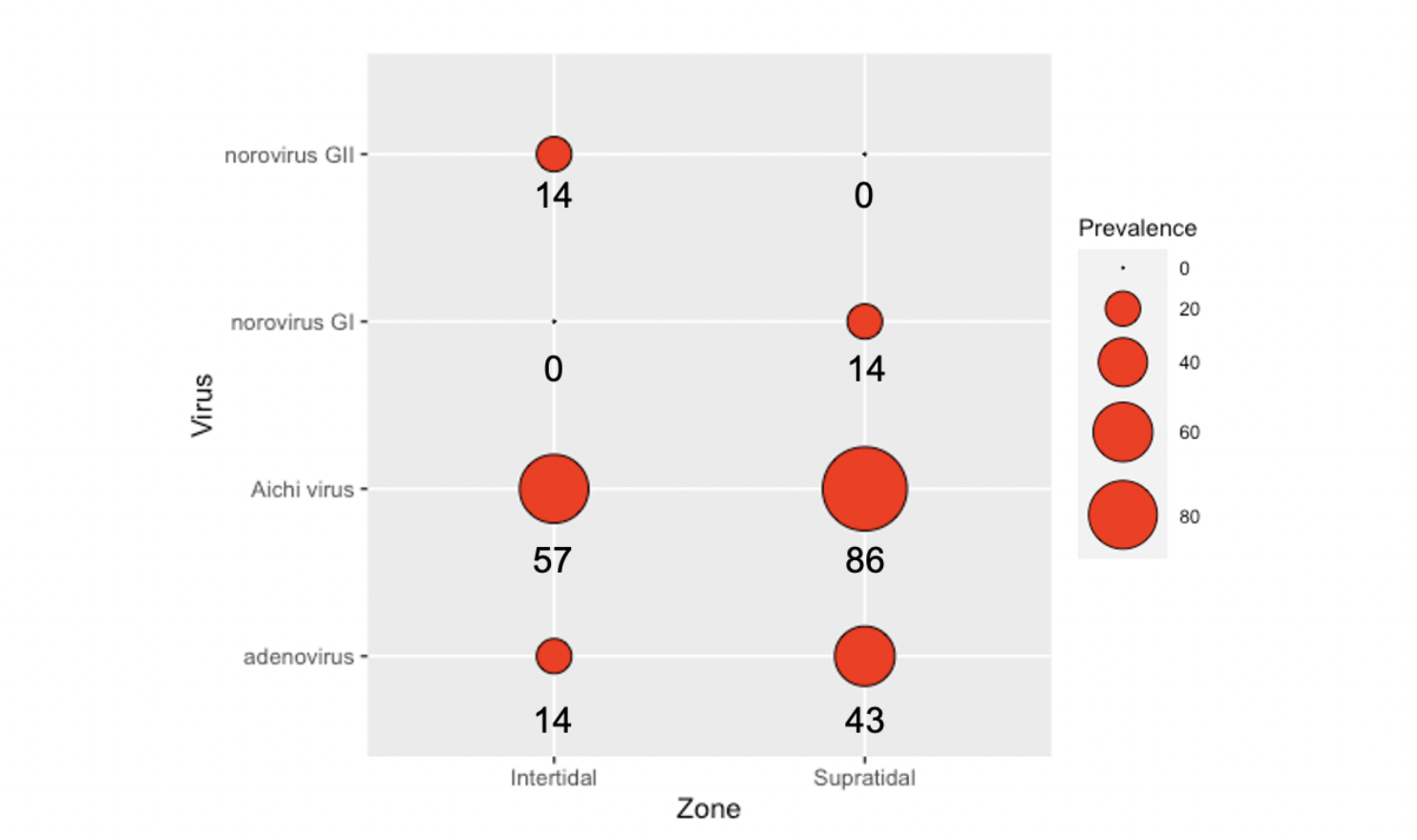The genetic material (the RNA or DNA) of viruses that can cause disease are found to accumulate in beach sands, beach sands corresponding to the intertidal zone (swash zone) and to the supratidal zone (the zone right above the high tide line). The accumulation of viral genetic material corresponds to common gastro-intestinal viruses such as norovirus and adenovirus and the less common Aichi virus. Although the genetic material was detected in beach sand it is not known if the genetic material is “active” or indicative of viruses capable of infecting humans. The beaches studied were in Portugal, one of which had a recent festival with participant camping, which is the suspected cause of the elevated levels of viral genetic material detected. The lessons learned from the Portuguese beaches can be applied throughout the world to better understand the possibility of disease transmission through beach sands. Researchers recommend a risk assessment to further document the possibility of disease from beach sands found to contain the genetic material from gastro-intestinal viruses.
This work was supported by the Joint Programming Initiative on Antimicrobial Resistance (JPIAMR) program, project Surveillance of Emerging Pathogens and Antibiotic Resistance in Aquatic Ecosystems (SARA), grant number Aquatic/0006/2020.
A. Robalo, J. Brandão, T. Shibata, H. Solo-Gabriele, R. Santos, S. Monteiro, Detection of enteric viruses and SARS-CoV-2 in beach sand, Science of The Total Environment, Volume 901, 2023, 165836, ISSN 0048-9697, https://doi.org/10.1016/j.scitotenv.2023.165836




